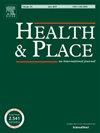Iowa spatial accessibility to screening mammography is improving, but utilization among privately insured women remains stable, 2016–2022
IF 4.1
2区 医学
Q1 PUBLIC, ENVIRONMENTAL & OCCUPATIONAL HEALTH
引用次数: 0
Abstract
This study explores the spatial accessibility and utilization of mammography screening services in Iowa from 2016 to 2022. Breast cancer continues to be the most incident cancer in Iowa, with early detection through mammography being critical for reducing mortality. Spatial accessibility considers both geographic accessibility and capacity as appointment availability simultaneously. Using optimization models, we evaluated the potential spatial accessibility to mammography screening for women aged 40–84. We found that while access to mammograms improved over time, particularly in rural areas, the theoretical capacity of mammography facilities was insufficient to meet the demand, particularly in suburban and rural areas where driving times posed significant barriers. Additionally, despite improvements in accessibility, utilization rates among privately insured women remained stable, with the highest mammography uptake among urban and suburban women and women of older ages. Discrepancies between the accessibility models and the utilization patterns indicate that additional decisions are being made by patients independent of driving distance, such as appointment availability, provider preference, or wait times, that may influence patients to receive mammograms at farther locations.
爱荷华州乳房x光筛查的空间可达性正在改善,但2016-2022年私人保险女性的利用率保持稳定
本研究探讨了爱荷华州2016 - 2022年乳房x光筛查服务的空间可及性和利用情况。乳腺癌仍然是爱荷华州发病率最高的癌症,通过乳房x光检查早期发现对于降低死亡率至关重要。空间可达性同时考虑地理可达性和预约可达性。利用优化模型,对40-84岁女性乳房x线摄影筛查的潜在空间可达性进行了评价。我们发现,随着时间的推移,乳房x光检查的普及率有所提高,特别是在农村地区,但理论上乳房x光检查设施的能力不足以满足需求,特别是在郊区和农村地区,驾车时间构成了重大障碍。此外,尽管可及性有所改善,但私人保险妇女的使用率保持稳定,城市和郊区妇女以及老年妇女的乳房x光检查使用率最高。可及性模型和利用模式之间的差异表明,患者正在做出独立于驾驶距离的额外决定,例如预约可用性、提供者偏好或等待时间,这些决定可能会影响患者在更远的地点接受乳房x光检查。
本文章由计算机程序翻译,如有差异,请以英文原文为准。
求助全文
约1分钟内获得全文
求助全文
来源期刊

Health & Place
PUBLIC, ENVIRONMENTAL & OCCUPATIONAL HEALTH-
CiteScore
7.70
自引率
6.20%
发文量
176
审稿时长
29 days
期刊介绍:
he journal is an interdisciplinary journal dedicated to the study of all aspects of health and health care in which place or location matters.
 求助内容:
求助内容: 应助结果提醒方式:
应助结果提醒方式:


